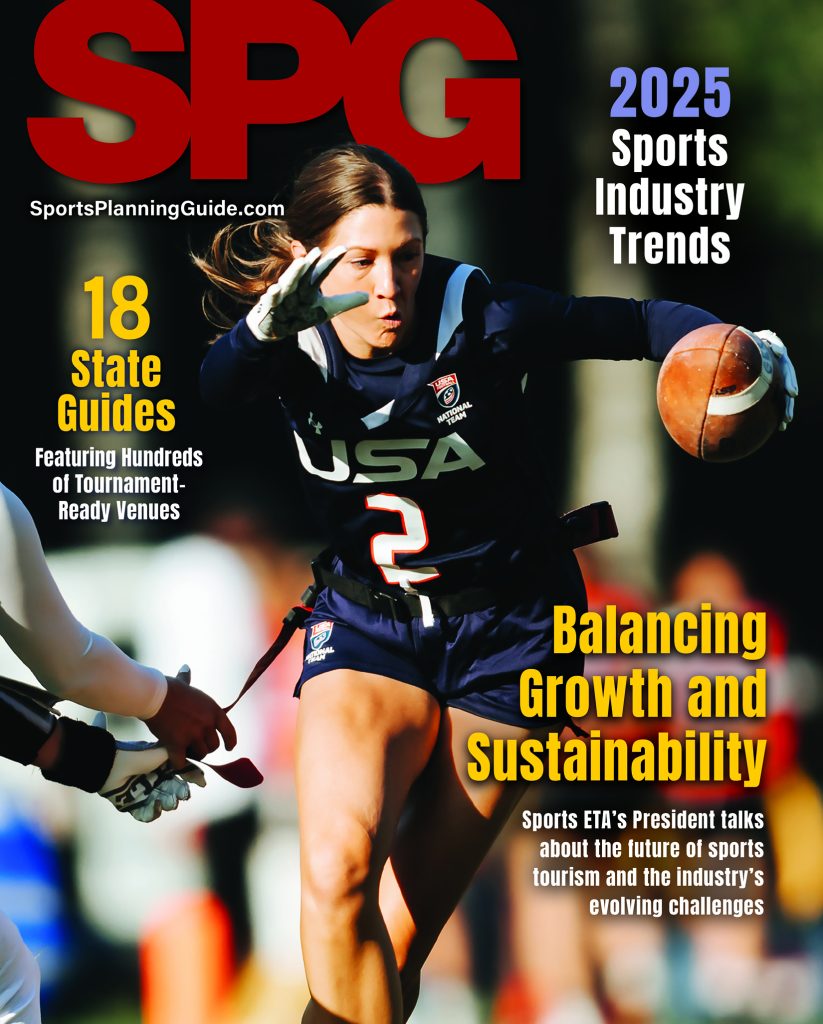The best organizations will be raising the bar and following a smart plan in the upcoming year
As we noted last year in this column, sports tourism now has a better seat at the collective tourism table than ever before. Destinations are dedicating more time and resources to the sports market than at any time in my 26 years serving this industry.
For our eighth edition of the Sports Planning Guide trends article, our team at Huddle Up Group looked back at the past year to craft and share the trends to look for in 2023 and beyond. Without further ado, we offer you the top 10 trends we are closely following as we move into the new year.
1.Emphasis
Noted above, destination marketing organizations (DMOs) and convention and visitor bureaus (CVBs) across the country are investing more resources in sports tourism today than ever before. This comes in the form of an increased sports marketing effort and often times in facility development. The pandemic proved to us what we have been saying all along – sports tourism is immune from economic downturns, international conflicts, and yes, pandemics.
2.Bricks and Mortar
Nearly every project our team touched this past year had a facility element to it. What venues is that destination missing? Which of their existing facilities can be enhanced to become tournament friendly? If we built XYZ what would the economic output likely be? Ten years ago, very few tourism agencies were investing in bricks and mortar. Today, nearly every one we work with is getting in the weeds with their community leaders to help develop new facilities and/or enhance their existing venues.

About the author:
Jon Schmieder is the Founder of the Huddle Up Group LLC, a sports industry consulting company led by award winning executives. Schmieder has 25 years of experience in leading sports tourism and events organizations through strategic growth and increased community collaboration. The Huddle Up Group has worked with more than 250 sports organizations and destinations on over 150 strategic projects. In 2017, the Huddle Up Group was given the Superior Service Award, the highest honor a consulting firm can earn from the National Association of Sports Commissions. Jon can be reached via email or by phone at 602-369-6955. To receive the weekly “Monday Huddle Up” visit Huddle Up Group or sign up here.
3.Funding
Following up on No. 2 above, how do we fund facility development and enhancement? Tourism Improvement Districts (or TIDs) are definitely the most popular route to take today. Nearly every community we work with is pushing forward some form of state and locally enabling legislation to put a TID in place to fund sports tourism marketing and facility development. Having a sustainable funding mechanism like this can serve a community well in the near and long-term.
4.DEI
Diversity, Equity, and Inclusion (or DEI) has become a front line topic for CVBs and event rights holders alike. Several event owners have rebranded to give notice that they are intentionally addressing DEI issues. Destination International has also provided some excellent best practices in this area for CVBs through their DEI Committee’s work. As a country, we have a long way to go here. We are glad to see the tourism community at large taking an active role in how we interact with one another to make our nation a more equitable place.
5.Pickleball
The fastest growing sport in America is taking over. Pickleball has grown into a national force from the tournament level all the way down to recreational leagues across the country. Pickleball has become an “overnight success” starting in a driveway in Washington State in 1967, with the first official organization for the sport being formed in 1972. One thing our team talks about when looking at the rise of pickleball over the past decade is this – what new sport will emerge next? Slamball? Maybe teqball? How about KUUB? (Note: if you have not heard of these sports, they are all cool, Google them). More sport options mean more potential participants which mean more tournaments to potentially host. If destinations can partner with these sports as they grow, there is a greater possibility to establish a stronghold within these sports (and their events) in the future.
6.Regionality
Even prior to the pandemic, there was a growing trend of “national championship” events becoming more drive market than cross country flights. That is, the teams were more and more coming from a day’s drive to a tournament than getting on a plane to travel long distances. The pandemic only accelerated that trend. This is important to consider when you are working to create your own events (a trend from the past few years in this writing), as you will want to focus on clubs and teams from within a day’s drive versus trying to recruit teams from greater distances.
7.Special Events
More tourism organizations are adding the marketing and management of special events to the sports department’s plate. The ability to execute a sporting event isn’t that much different than producing a music festival. Putting on the “backpacks” (as we like to call it) for special events is becoming quite common for those with an experienced sports staff on the team.
8.Bigger, Better, Stronger, Faster
One of the most common calls we got this past year from destinations was this, “We had to furlough all our people during the pandemic, but sports kept rolling. So, we need to build our sports program back up to a place where it is even bigger and better than it was before.” This is another form of doubling down on the great performance sports tourism offered the industry over the past two-plus years.
These last two are carryovers from last year that are still quite relevant today….
9.Accountability
As we start to rebound back to 2019 levels, in many cases, resources are still more limited than in prior years. Given that we have to try to do more with less, the microscope is now on every transaction that is made. Every dollar has to have a good result and those that are tasked with governing our organizations are paying a lot more attention to how money is spent. Transparent organizations have a process for why decisions are made on resource allocations and document every move along the way.
10.Silent Sports
Several outdoor sports have seen massive spikes in participation the past few years. Golf, canoe/kayak, and fishing (among others) all offer opportunities for those destinations that seek them. These “silent sports” have become a cornerstone for business development with many CVBs across the country. We would also recommend that for those destinations that have great water and trail assets, that you look at how to optimize some of your sports tourism marketing to the leisure travelers in these sports.
The underlying theme of these trends really boils down to intentionality. Every move your organization makes should be intentional and follow a plan that the entire team thinks will lead to success. We like to say the best organizations out there are playing three dimensional chess while the average ones are playing checkers.
Be intentional. Play 3D chess. Raise the bar in the coming year for you and your organization.
Good luck to all in 2023.
By Jon Schmieder
Main photo: Pickleball continues to be a growing sport and is now a national force. Photo courtesy of PPA Tour.





